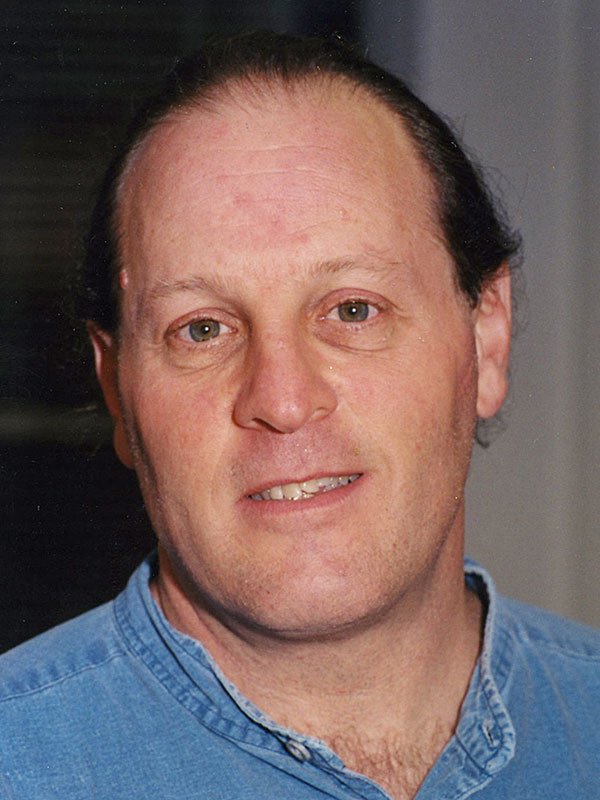Our laboratory is interested in understanding the mechanisms by which bacteria adapt to different host environments. We study as a model system Xenorhabdus nematophila, a motile gram-negative bacterium that engages in both mutualistic and pathogenic host interactions. Xenorhabdus forms a species-specific mutualistic association with the insect-invading nematode, Steinernema carpocapsae. The nematode enters insect hosts and X. nematophila is released from an intestinal vesicle into the insect's body cavity (hemocoel) where it functions as a pathogen. Contraction of the esophagus of the nematode stimulates the forward movement of Xenorhabdus out of the vesicle through a connecting structure that allows the bacteria to enter the intestine and ultimately leave the nematode via the anus. In the hemocoel, Xenorhabdus initially colonizes the connective tissue surrounding the anterior midgut of the host insect. The bacteria proliferate in the insect cadaver reaching high cell densities at which point they produce diverse exoenzymes and antibiotics. The bacteria themselves, as well as the macromolecular degradation they stimulate, provide a nutrient base suitable for nematode reproduction. After several cycles of sexual reproduction the nematodes develop into a dauer juvenile stage that possesses the specialized intestinal vesicle that Xenorhabdus colonizes by a monoclonal process.
Thappeta, Kishore Reddy V., Ciezki, Kristin, Morales-Soto, Nydia, Wesener, Shane, Goodrich-Blair, Heidi, Stock, S. Patrica, and Forst, Steven A.
“R-type bacteriocins of Xenorhabdus bovienii determine the outcome of interspecies competition in a natural host environment” Microbiology(2020).
Ciezki, K, Wesener, S, Jaber, D, Mirza, S, and Forst, Steven A.
“ngrA-dependent natural products are required for interspecies competition and virulence in the insect pathogenic bacterium Xenorhabdus szentirmaii” Microbiology (Reading, England)165.5 (2019): 538-553.
Ciezki, K, Wesener, S, Jaber, D, Shama, Mirza P., and Forst, Steven A.
“ngrA-dependent natural products are required for interspecies competition and virulence in the insect pathogenic bacterium Xenorhabdus szentirmaii” Microbiology (Reading, England)165.5 (2019): 538-553.
McMullen, 2nd, J G., Peterson, B F., Forst, Steven A., Blair, H G., and Stock, S P.
“Fitness costs of symbiont switching using entomopathogenic nematodes as a model” BMC evolutionary biology17.1 (2017): 100.
Singh, S, Orr, D, Divinagracia, E, McGraw, J, Dorff, K, and Forst, Steven A.
“Role of secondary metabolites in establishment of the mutualistic partnership between Xenorhabdus nematophila and the entomopathogenic nematode Steinernema carpocapsae” Applied and environmental microbiology81.2 (2015): 754-64.
Morales-Soto, N., Gaudriault, S., Ogier, J. C., Thappeta, K. R., and Forst, Steven A.“Comparative analysis of P2-type remnant prophage loci in Xenorhabdus bovienii and Xenorhabdus nematophila required for xenorhabdicin production” FEMS Microbiol Lett333.1 (2012): 69-76.
Dornfeld, C. L., Hoelzer, M., and Forst, Steven A.“Proteopedia entry: beta-prime subunit of bacterial RNA polymerase” Biochem. Mol. Biol. Educ40.4 (2012): 284.
Snyder, H., He, H., Owen, H., Hanna, C., and Forst, Steven A.“Role of Mrx fimbriae of Xenorhabdus nematophila in competitive colonization of the nematode host” Appl. Environ. Microbiol77.20 (2011): 7247-7254.
Fodor, A., Fodor, A. M., Forst, Steven A., Hogan, J. S., Klein, M., Lengyel, K., Saringer, G., Stackebrandt, E., TAylor, J., and Lehoczky, E.. “Comparative analysis of antibacterial activities of Xenorhabdus species on related and non-related bacteria in vivo” Journal Microbiol and Antimicrobials2.3 (2010): 30-35.
Ogier, J. C., Calteau, A., Forst, Steven A., Goodrich-Blair, H., Roche, D., Rouy, Z., Zuen, G., Zumbihl, R., Givaudan, A., Tailliez, P., Médigue, C., and Gaudriault, S.. “Units of plasticity in bacterial genomes: new insight from the comparative genomics of two bacteria interacting with invertebrates, Photorhabdus and Xenorhabdus” BMC Genomics11. (2010): 568-578.
